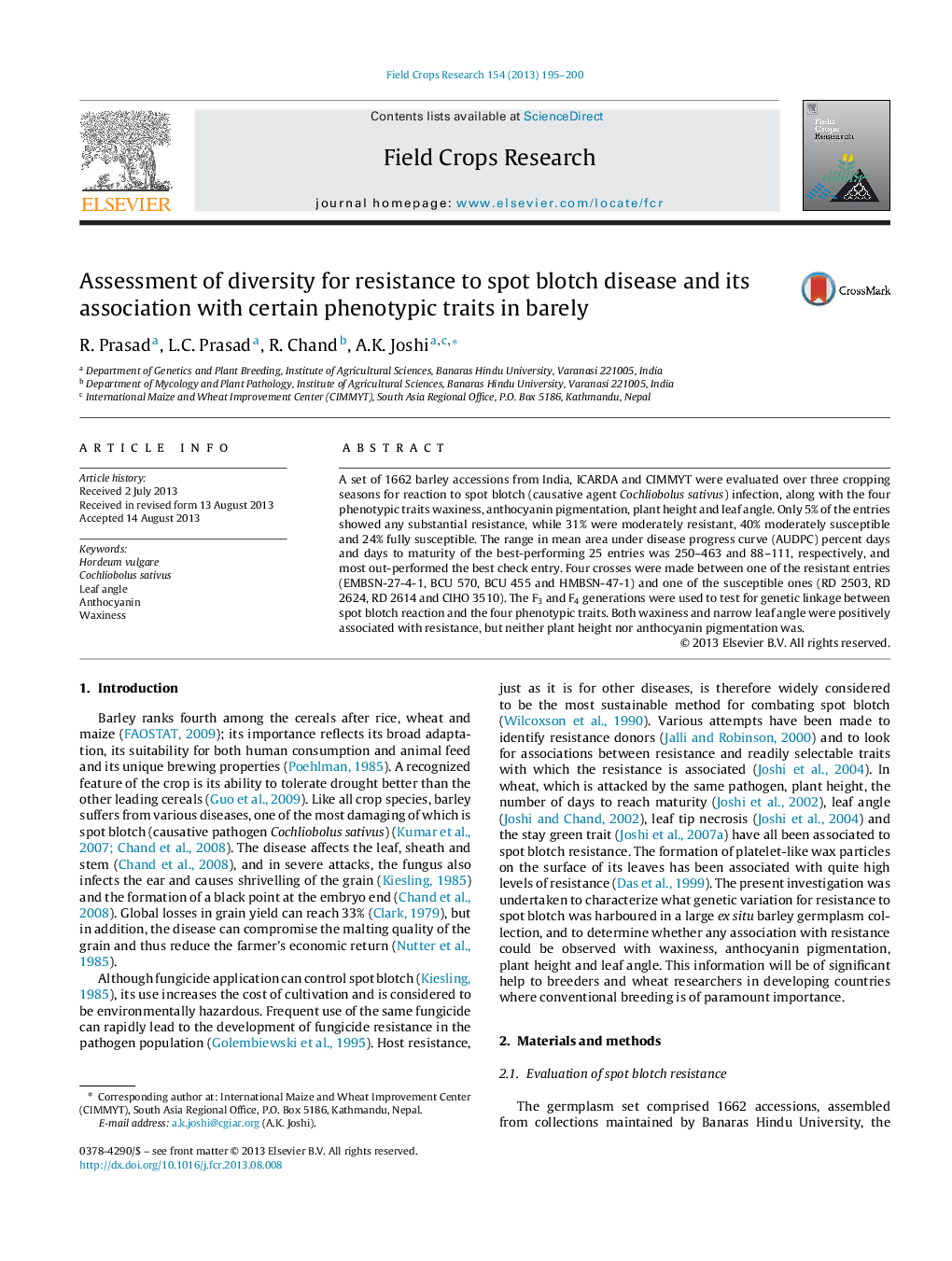| Article ID | Journal | Published Year | Pages | File Type |
|---|---|---|---|---|
| 6375180 | Field Crops Research | 2013 | 6 Pages |
Abstract
A set of 1662 barley accessions from India, ICARDA and CIMMYT were evaluated over three cropping seasons for reaction to spot blotch (causative agent Cochliobolus sativus) infection, along with the four phenotypic traits waxiness, anthocyanin pigmentation, plant height and leaf angle. Only 5% of the entries showed any substantial resistance, while 31% were moderately resistant, 40% moderately susceptible and 24% fully susceptible. The range in mean area under disease progress curve (AUDPC) percent days and days to maturity of the best-performing 25 entries was 250-463 and 88-111, respectively, and most out-performed the best check entry. Four crosses were made between one of the resistant entries (EMBSN-27-4-1, BCU 570, BCU 455 and HMBSN-47-1) and one of the susceptible ones (RD 2503, RD 2624, RD 2614 and CIHO 3510). The F3 and F4 generations were used to test for genetic linkage between spot blotch reaction and the four phenotypic traits. Both waxiness and narrow leaf angle were positively associated with resistance, but neither plant height nor anthocyanin pigmentation was.
Related Topics
Life Sciences
Agricultural and Biological Sciences
Agronomy and Crop Science
Authors
R. Prasad, L.C. Prasad, R. Chand, A.K. Joshi,
